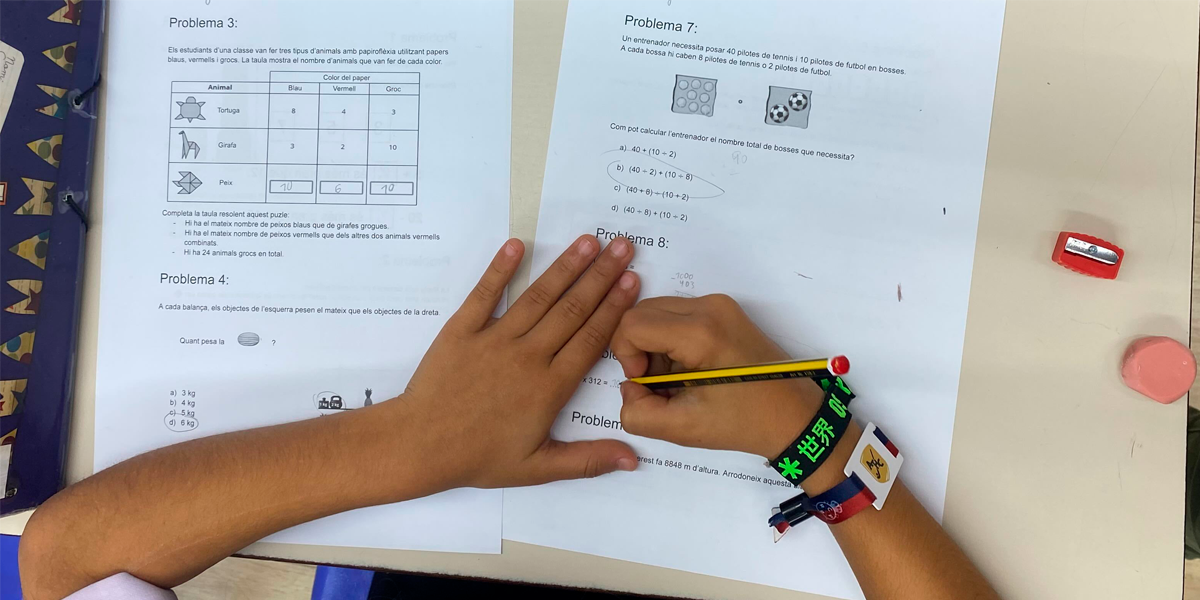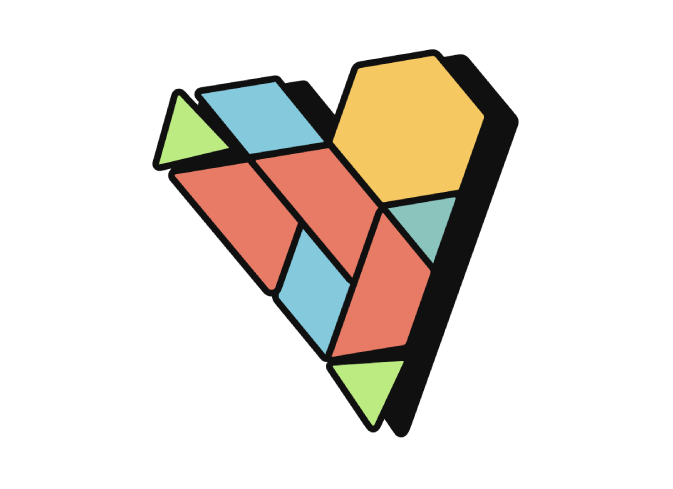A tool to transform your math classroom
We would never ask a student to multiply when they don’t yet know how to add. When we examine this a little further, we see that multiplying is nothing more than repeatedly adding the same number and therefore, it requires an understanding of what it means to add. The learning of mathematics, especially number sense, has a sequenced nature: to understand a new concept, we must rely on work previously done, building brick upon brick.
Math Learning Trajectories
In this way, we can sense that, under the umbrella of concepts and mathematical skills that we know, there is a skeleton, a structure that sequences the skills that a student can learn. This is where learning trajectories are born, a concept that has been taking shape in teaching articles and magazines over the last 25 years and that has been shown to have a transformative potential. Defining learning trajectories is an action that affects the two main agents in education: students and teachers. As teachers, being aware of the evolution of a mathematical skill allows us to know what steps a student is likely to have taken to get where they are, while making us aware of what they could learn from this point onwards. In this way, we can make more appropriate and documented teaching decisions. If we accompany these trajectories with specific tasks associated with each stage of learning, we have a fantastic, formative assessment tool at our disposal (Morales and Fernández, 2022). In fact, several studies speak of the success of learning trajectories as a training tool for teachers (Wilson, 2013; Sarama, 2017), as a tool to improve students’ mathematical learning (Clements, 2011) and as a cornerstone of a theoretical framework for research-based teaching (Sztajn, 2012).
Generally, learning trajectories have been set up for specific sets of skills, such as counting or building up the sense of measurement. Some recent research has focused its efforts on developing these trajectories. As a result of this, at Innovamat a question came up, which was almost necessary to address: could all these small sequences be united in a single map that represents all the interdependencies in the learning of mathematics? And, since we like challenges, we got down to it.
Innovamat teaching sequence
After more than a year of studying, reading, having conversations with experts and countless meetings to discuss and agree on ideas, we can enthusiastically say that we have the first version of this map of mathematical content ready, that focuses on content usually worked on from the ages of 3 to 12. To this day, we continue to develop the map further, adding content that is usually worked on at later stages. We want to make it clear that a job like this, which requires making numerous complex decisions, will always be alive and in continuous construction and improvement. Many parts are referenced and supported by specialized literature, but it would be unwise to think that there can be no new findings that will influence and improve the map.
Now, let us explain a couple of specifications to help understand the construction of the map and to be able to interpret it correctly.
This ‘map’ is actually a graph, consisting of a set of nodes (the small learning units), and a set of arrows. An “A → B” arrow means that a student who fails to A is very likely not to achieve what B either. It is important to note, however, that this arrow does not imply that B is the step immediately after A. In fact, most nodes have more than one incoming and outgoing arrow. The part of the graph corresponding to number sense, for example, looks like this:
Intense, right? Right now there are about 2,000 nodes and a few thousand arrows going between them. The purpose, therefore, is not to visualize learning dependencies in a global way, but to use this huge, interconnected network to create tools that truly help us build knowledge in the classroom.
As one of the initial motivations of the project (later on, it ended up transforming other areas that we did not contemplate at first), having a single trajectory allows us to guide the help that a student needs to continue learning. Let’s imagine that Martina has difficulties with addition using the vertical algorithm. Looking at the graph, we can quickly ask ourselves questions such as, if we propose a sum where the units of the two addends do not exceed ten, is she able to solve it? If not, would she know how to solve that same sum manipulatively, using base 10 blocks? If not, does Martina know how to represent a number with base material 10? If not, is she able to count in 1s and 10s in the relevant range? Following this process, we can go through the graph backwards to detect what is the point of origin of Martina’s difficulties, and we use the resources associated with that learning point to find tasks or guides that help us propose solutions. Whatever the content category, we can do this thanks to the map.

Contents and processes
Given our competency conception of mathematics, it is important to emphasize that everything that appears in the graph is content: it does not refer to the processes underlying all mathematical performance (problem-solving, reasoning and proof, connections, communication and representation). However, the treatment of the content with teaching activities or attitudes that do not accommodate the development of these processes would greatly limit the potential of a tool like this map. Far from a conception of teaching as simply running through these nodes, our intention is for the graph to give an interconnected vision of a useful order of building content.
Another interesting point is the fact that a structure like this is easily programmable to be read by a machine, and this allows us to individualize learning through digital tools. Innovamat students spend time every week systematically practicing, using an app, the content that has been seen in the classroom. The resulting data, well interpreted using the map, can be used to identify what stage each student is at and what would be useful to reinforce, practice or explore. Knowing this information, at the level of detail desired by each individual, is very valuable in that it gives teachers more visibility on the learning process of our students, and we can guide them more easily towards their next challenges.
After spending so much time on dots and arrows, we run the risk of getting too excited and going into too much detail on the possibilities that this map offers and the doors it opens. With this brief presentation, for now, we’ll leave everyone to think about how a tool like this could transform their classroom or their way of guiding students. The time and interest shown by teachers in these trajectories will tell us if it would be useful to convert the map into a format that is easier to consult and digest, that is open to the educational community. In the end, a reflection on your own, individual classroom is always the most powerful transformation.
- Douglas H. Clements & Julie Sarama (2004) Learning Trajectories in Mathematics Education, Mathematical Thinking and Learning, 6:2, 81-89, DOI: 10.1207/s15327833mtl0602_1
- Morales, M. M. & Fernández, J. F. G. (2022). Formative assessment: Effective strategies to regulate learning (Educational Innovation Library No . 48). Ediciones SM España.
- Wilson, P.H., Mojica, G.F., & Confrey, J. (2013). Learning Trajectories in Teacher Education: Supporting Teachers’ Understandings of Students’ Mathematical Thinking. The Journal of Mathematical Behavior, 32, 103-121.
- Sarama, J., Clements, D.H., & Spitler, M.E. (2017). Evidence of Teacher Change after Participating in TRIAD’s Learning Trajectories-based Professional Development and after Implementing Learning Trajectory-based Mathematics Instruction. Mathematics Teacher Education and Development, 19, 58-75.
- Douglas H. Clements, Julie Sarama, Mary Elaine Spitler, Alissa A. Lange, & Christopher B. Wolfe. (2011). Mathematics Learned by Young Children in an Intervention Based on Learning Trajectories: A Large-Scale Cluster Randomized Trial. Journal for Research in Mathematics Education, 42(2), 127–166. https://doi.org/10.5951/jresematheduc.42.2.0127
- Sztajn, P., Confrey, J., Wilson, P.H., & Edgington, C.P. (2012). Learning Trajectory Based Instruction. Educational Researcher, 41, 147 – 156.
- Siemon, D., Barkatsas, T. & Seah, R. (2019). Researching and Using Progressions (Trajectories) in Mathematics Education (Global Education in the 21st Century, 3). Brill | Sense.






